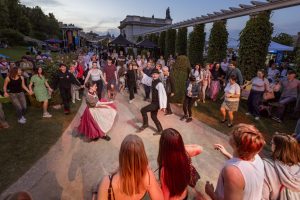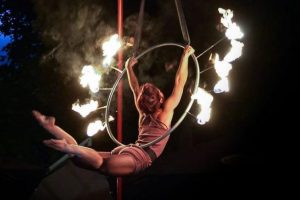There aren’t many books about Budapest that reveal new aspects of the city to those who were born and raised here, or are in love with the Hungarian capital. To find one that is Hungarian-English bilingual is an impossible mission. However, there is one exception: Budapest Katalógus.
The Catalogue of Budapest is an outstanding work of art in which 150 people living in the city share their unique stories. As editor Mátyás Szöllősi put it, the outcome is a real-life like book on Budapest. I met Mátyás in a centrally located café to talk about the stories the book reveals to its readers.
Európa KönyvkiadóThe book was inspired by the humans of new york blog in which New Yorkers told their stories and were taken photos of. The photos and stories of the Budapest katalógus was uploaded to facebook first, whereas the bilingual book was only published at the beginning of this summer. Does it mean that the catalogue is complete now?
No. I keep taking photographs and doing interviews. When I shared a post on Facebook on publishing the photos in a form of a book, the first person who liked the post was a Czech guy who works on a similar project in Prague. It comes as no surprise therefore that I wanted to have the book both in Hungarian and in English so that it would reach more people.
Was it easy to get people told you their stories?
Those who refused to talk to me did so because they were in a rush or simply weren’t interested in the project. As far as my experiences are concerned, if you initiate a conversation in a proper way, they will be willing to talk to you.
How did you manage to be talked to? Did you pose icebreaking questions?
I always asked if the person was originally from Budapest. If not, I knew that he or she must have had a special Budapest-experience. Then I went on quizzing how they got used to living here, what their first workplace was like, etc.
How long did these conversations last?
I’ve had 5-minute and one-and-half-an-hour long ones as well. When Budapest Katalógus became well-known, there were some who contacted me asking if I would take photos of them, too. These prearranged meetings took more time, as everyone knew what to expect. However, there was an old lady called Mézeske whom I met accidentally, she was talking to me for an hour. When we said goodbye, she told me she hoped to see me again. The funny thing is that we did meet once afterwards.
Which story was the most exciting for you?
The story of István Ágh, a famous Hungarian poet. He was telling me about how he was shot in the Hungarian Revolution of 1956, put on a stretcher, taken to the hospital, sent home, after which he had to hide. When I walked with him to Kossuth Square, he showed me the place where wounded freedom fighters were lying, and from where they were being shot at by soldiers.
If one of the photos in Budapest Katalógus belonged to you, where would it be possible to bump into you?
Mostly, I can be found in the city centre, around Deák Square. I would probably tell you about my musical experience, as I love listening to classical music. There are a great number of places, such as MÜPA, the Music Academy, BMC or Budapest Jazz Club where one can enjoy excellent tunes. I would also mention the reformation of café culture and its second boom. It is important to me, because I’m addicted to coffee. There is also a quotation from Sándor Márai which is really close to me: ‘Without coffeehouse, there is no literature.’
‘Nice book’ – said the waitress, as she was looking at Budapest Katalógus passing us by. Mátyás and I smiled. Giving it another thought, she was wrong. It is not just a book. Budapest Katalógus is the city coming to life.





